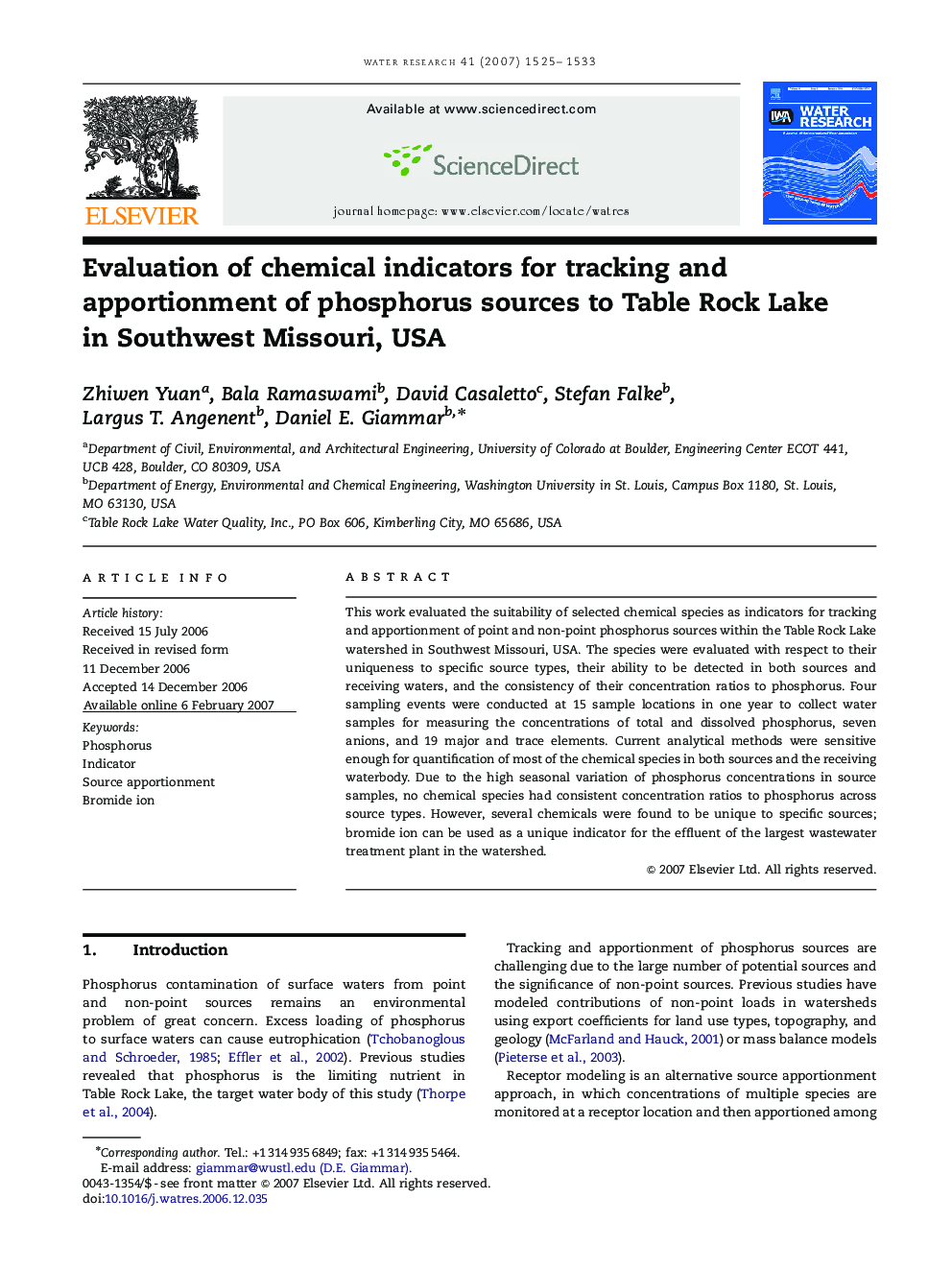| Article ID | Journal | Published Year | Pages | File Type |
|---|---|---|---|---|
| 4486473 | Water Research | 2007 | 9 Pages |
This work evaluated the suitability of selected chemical species as indicators for tracking and apportionment of point and non-point phosphorus sources within the Table Rock Lake watershed in Southwest Missouri, USA. The species were evaluated with respect to their uniqueness to specific source types, their ability to be detected in both sources and receiving waters, and the consistency of their concentration ratios to phosphorus. Four sampling events were conducted at 15 sample locations in one year to collect water samples for measuring the concentrations of total and dissolved phosphorus, seven anions, and 19 major and trace elements. Current analytical methods were sensitive enough for quantification of most of the chemical species in both sources and the receiving waterbody. Due to the high seasonal variation of phosphorus concentrations in source samples, no chemical species had consistent concentration ratios to phosphorus across source types. However, several chemicals were found to be unique to specific sources; bromide ion can be used as a unique indicator for the effluent of the largest wastewater treatment plant in the watershed.
